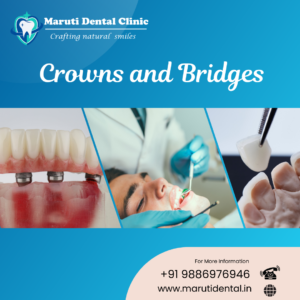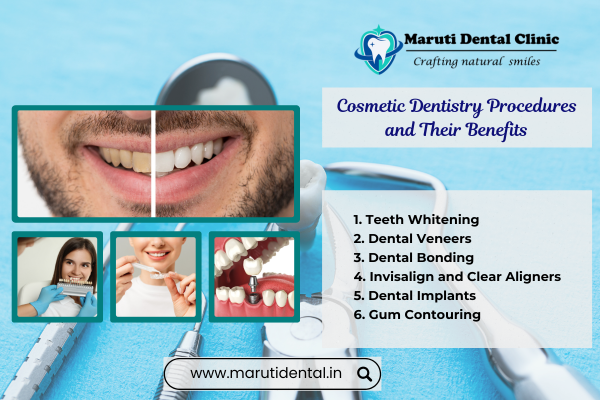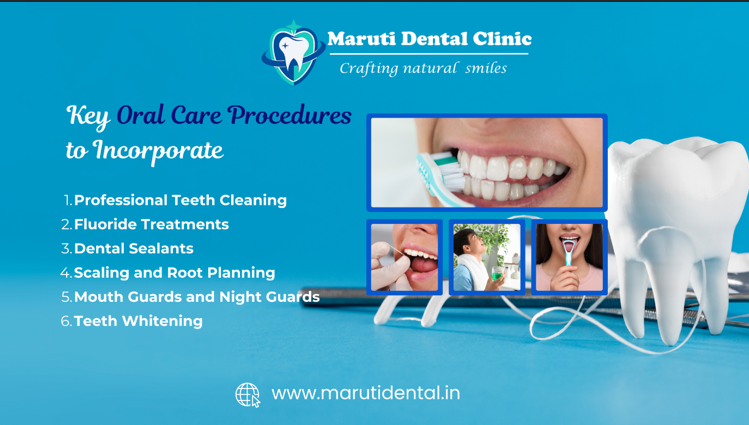When it comes to achieving a flawless smile and restoring dental functionality, crowns and bridges are among the most reliable solutions. These dental treatments are not only effective but also long-lasting, making them a popular choice for patients around the world. In this blog, we will explore everything you need to know about crowns and bridges, including their benefits, lifespan, and how they can transform your smile.

What Is a Crown and a Bridge?
- Dental Crowns: A dental crown is a tooth-shaped cap placed over a damaged or weakened tooth to restore its shape, size, strength, and appearance. Crowns are used to cover decayed teeth, protect weakened teeth from further damage, or improve the look of discolored or misshapen teeth. They are typically made from materials such as porcelain, ceramic, metal, or resin, ensuring durability and a natural look.
- Dental Bridges: A dental bridge, as the name suggests, is designed to “bridge” the gap left by one or more missing teeth. Bridges consist of two or more crowns on either side of the gap (called abutment teeth) and a false tooth or teeth (pontics) in between. These false teeth can be made from the same materials as crowns and are securely anchored to provide a seamless and functional solution for missing teeth.
In summary, crowns and bridges work hand-in-hand to restore dental functionality and aesthetics, whether it’s by repairing damaged teeth or replacing missing ones.
What Are the Benefits of Crowns and Bridges?
Investing in crowns and bridges offers numerous benefits, making them an excellent choice for both cosmetic dentistry and restorative dental needs. Here are some of the key advantages:
- Improved Aesthetics: Crowns and bridges are made to blend in perfectly with your natural teeth, giving you a consistent, appealing smile. Modern materials, such as porcelain and ceramic, mimic the appearance of natural enamel.
- Improved Functionality: Missing or damaged teeth can make it difficult to chew or speak properly. Crowns and bridges restore functionality, allowing you to enjoy your favorite foods and speak clearly.
- Avoid Tooth Shifting: When a tooth is lost, nearby ones may move into the gap, which can throw off alignment. Bridges prevent this by filling the gap and maintaining proper alignment.
- Strength and Durability: Crowns strengthen weakened teeth, protecting them from further damage. Similarly, bridges provide a stable and durable solution for replacing missing teeth.
- Boosted Confidence: A healthy, complete smile can significantly improve your self-esteem and confidence in social and professional settings.
- Long-Lasting Solution: With proper care, crowns and bridges can last for many years, providing a reliable and cost-effective dental solution.
- Customizable Options: Crowns and bridges are highly customizable in terms of material, color, and shape, ensuring a perfect match for your unique dental needs.
How Are Crowns and Bridges Placed?
The process of getting crowns and bridges typically involves the following steps:
- Initial Consultation: Your dentist will assess your oral health, take X-rays, and discuss your treatment options.
- Tooth Preparation: For crowns, the damaged tooth is reshaped to accommodate the crown. For bridges, the abutment teeth are prepared by removing a small portion of teeth to fit the crowns.
- Impressions: Your dentist will take impressions of your teeth to create custom crowns and bridges that fit perfectly.
- Temporary Crowns or Bridges: While your permanent restoration is being made, temporary crowns or bridges may be placed to protect your teeth.
- Final Placement: Once your custom crowns or bridges are ready, they will be bonded securely to your teeth using dental cement, ensuring a comfortable and stable fit.
How Long Do Crowns and Bridges Last?
The longevity of crowns and bridges depends on several factors, including the materials used, your oral hygiene habits, and regular dental care. On average:
- Crowns usually last 10 to 15 years, but with the right maintenance, they can last even longer. Metal crowns are more resilient, whereas porcelain and ceramic crowns are more prone to wear and tear but provide better aesthetics.
- Bridges can last for 10 to 15 years or longer. How well you maintain your oral hygiene and the condition of the supporting teeth will determine how long they last.
To maximize the lifespan of your crowns and bridges:
- Brush and floss regularly, paying special attention to the area around the crowns and bridges.
- Use a fluoride toothpaste to strengthen your teeth.
- Avoid chewing on hard foods, ice, or objects that could damage your restorations.
- Visit your dentist for regular check-ups and professional cleanings.
- Wear a night guard if you grind your teeth, as this can wear down crowns and bridges over time.
How Much Do Crowns and Bridges Cost?
Crown and bridge charges range relying on at the material used, the complexity of the surgical operation, and the understanding of the dentist. While those remedies may additionally already appear costly, they are a worthwhile funding in each your oral fitness and your life. Many dental clinics offer financing options or payment plans to make these treatments affordable.
Are Crowns and Bridges Right for You?
If you have tooth decay, missing teeth, or want to improve the appearance of your smile, crowns and bridges may be the ideal solution for you. Discuss your specific requirement with your dentist and discover the high-quality approaches to restore your smile
Conclusion:
Crowns and bridges are transformative dental solutions that not only restore the functionality of your teeth but also enhance your smile’s aesthetics. By investing in these treatments, you can regain your confidence, improve your oral health, and enjoy a long-lasting solution for damaged or missing teeth. With proper care and maintenance, crowns and bridges can serve you well for many years to come.
If you’re considering crowns and bridges, contact us today and take the first step toward achieving a perfect smile. Your journey to better dental health starts here!



